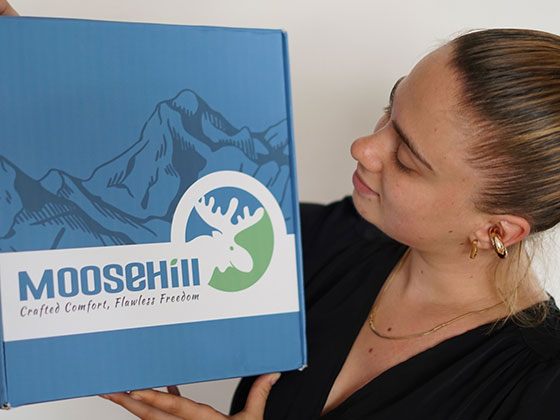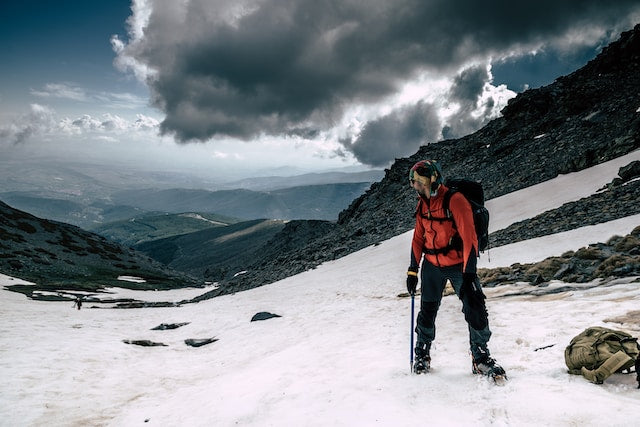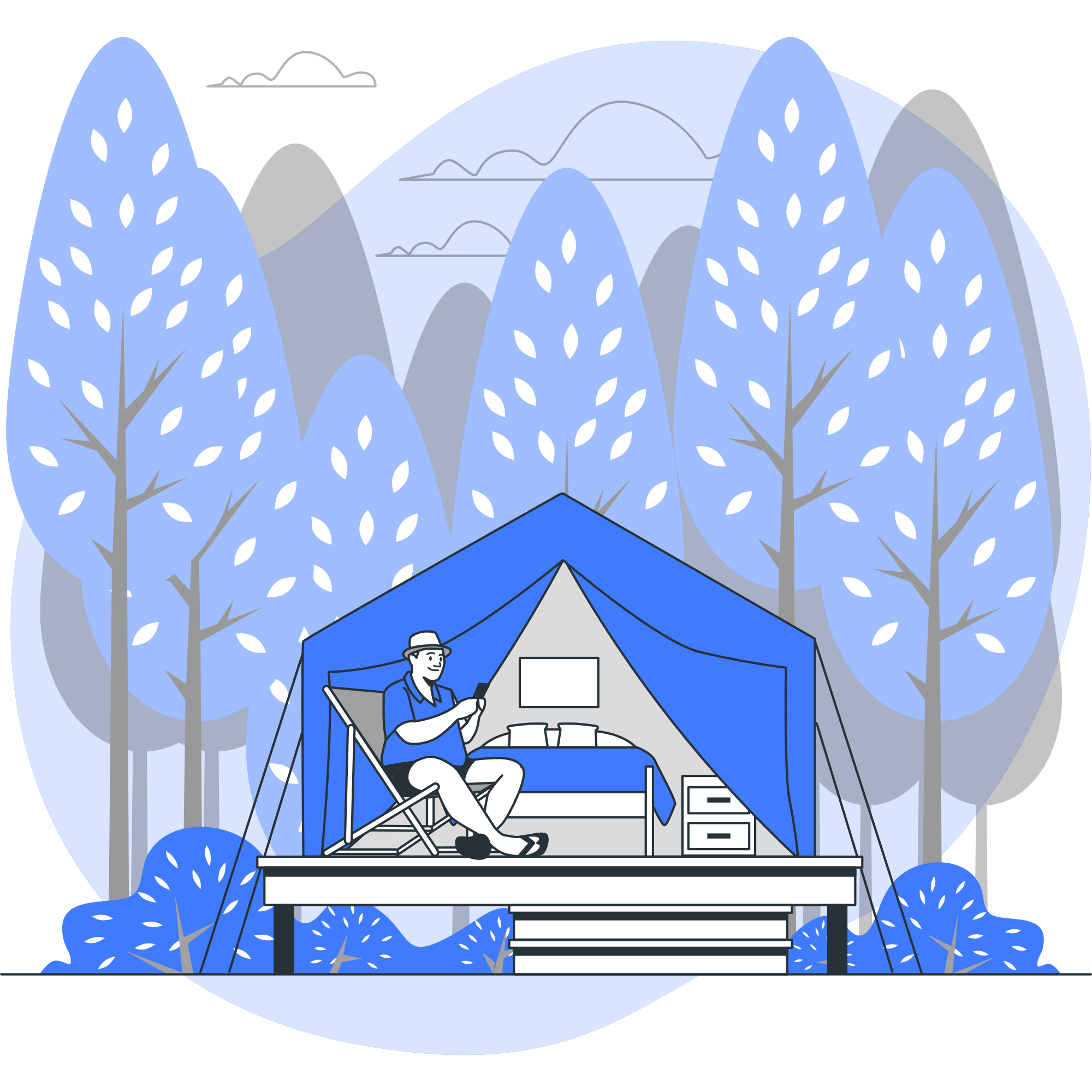Quando si fa trekking in terreni montuosi, è importante evitare di perdersi, conservare energia e mantenere un buon ritmo. L'obiettivo dovrebbe essere quello di seguire i sentieri stabiliti ogni volta che è possibile e scegliere sentieri più ampi rispetto a quelli più piccoli. In assenza di un sentiero designato, è consigliabile attraversare lungo le creste longitudinali, le cime montane, i pendii, le rive dei fiumi e le aree con alberi alti, vegetazione rada, ampi spazi e erba bassa. In generale, non è raccomandato avventurarsi in profonde valli, cespugli fitti o aree intricate con viti e bambù. Si dovrebbe dare preferenza alle creste rispetto alle valli e ai percorsi verticali rispetto a quelli orizzontali. Camminare con grandi passi è un principio che si applica anche al trekking in terreni montuosi. Aumentando la lunghezza del passo e facendo tre passi nello spazio di due, puoi coprire lunghe distanze facendo meno passi e conservando energia. Come si suol dire, "Non si tratta di essere veloci, ma di non restare fermi." Quando ci si sente affaticati, è consigliabile passare a un ritmo rilassato e più lento piuttosto che fermarsi completamente. Camminando lentamente per solo un minuto, puoi coprire una considerevole distanza di diverse decine di metri.
Quando si fa trekking in terreni montuosi, si incontrano spesso vari pendii rocciosi e scogliere. Pertanto, l'arrampicata su roccia è un'abilità cruciale per l'alpinismo. Prima di tentare un'arrampicata su roccia, è importante osservare attentamente le rocce, valutare la loro qualità e il grado di erosione, e poi determinare la direzione e il percorso per arrampicare. La tecnica fondamentale per l'arrampicata su roccia è il metodo del "contatto a tre punti", che richiede agli arrampicatori di coordinare efficacemente mani e piedi. Fissando due punti con mani o piedi e poi muovendo il punto rimanente, il centro di gravità del corpo sale gradualmente. Quando si utilizza questo metodo, è importante evitare movimenti improvvisi verso l'alto e scosse, astenersi dal muovere due punti simultaneamente e mantenere stabilità, leggerezza e rapidità. A seconda della situazione, scegliere la distanza più adatta e il punto d'appoggio più sicuro, evitando di fare passi lunghi e di allungarsi troppo con le mani o i piedi.

Le pendenze erbose e le pendenze di detriti sono i tipi di terreno più comuni che si trovano nelle montagne. Sotto un'altitudine di 3000 metri, eccetto per le scogliere, la maggior parte delle aree montuose è costituita da pendenze erbose e pendenze di detriti. Quando si scalano pendenze inferiori ai 30 gradi, è possibile salire in linea retta. Inclina leggermente in avanti, mantieni l'intero piede a contatto con il terreno, piega le ginocchia e fai passi con un ritmo moderato, evitando passi troppo lunghi o veloci. Quando la pendenza supera i 30 gradi, scalare in linea retta diventa più difficile. Le articolazioni della caviglia hanno una flessibilità limitata, portando a fatica, e la pendenza ripida aumenta il rischio di detriti instabili, rendendo più facile scivolare. Pertanto, il metodo di salita a "Z" è comunemente utilizzato. Questo comporta di traversare in un modello a zigzag lungo la pendenza. Durante la salita, mantieni le gambe leggermente piegate, inclina in avanti, punta il lato interno delle dita dei piedi in avanti, mantieni l'intero piede a contatto con il terreno e angola leggermente il lato esterno delle dita dei piedi verso l'esterno. Quando attraversi le pendenze erbose, fai attenzione a non afferrare gli alberi o tirare le viti, poiché potrebbero rompersi e causare una caduta. Quando attraversi le pendenze di detriti, presta particolare attenzione a mantenere una base stabile e solleva i piedi delicatamente per evitare che i detriti rotolino. Se scivoli accidentalmente mentre ti muovi, affronta immediatamente la pendenza, allarga le braccia, estendi le gambe (con le dita dei piedi sollevate) e cerca di spostare il centro di gravità del tuo corpo verso l'alto per ridurre la velocità di scivolamento. In questo modo, puoi cercare appigli e supporti mentre scivoli. Evita di sederti rivolto verso l'esterno, poiché non solo aumenterà la velocità di scivolamento, ma aumenterà anche il rischio di rotolare su pendenze più ripide.
Quando si fa trekking in aree montuose durante la stagione delle piogge, è consigliabile evitare le zone basse come valli e corsi d'acqua per prevenire alluvioni lampo e frane. Se si incontra un temporale, cercare immediatamente riparo in aree basse vicine o in folta vegetazione, e evitare di nascondersi sotto alberi alti. Gli alberi alti sono spesso soggetti a fulmini, il che può essere pericoloso. Durante un temporale, riporre temporaneamente oggetti metallici in un luogo facilmente accessibile piuttosto che portarli con sé. Puoi anche cercare un terreno più basso per sdraiarti. In aree montuose, se si incontrano condizioni meteorologiche avverse come neve, nebbia fitta o venti forti, è meglio fermarsi e cercare riparo sotto scogliere o in grotte fino a quando il tempo non migliora. Quando si fa trekking in montagna, non sovrastimare la propria forza fisica. Riposati adeguatamente quando ti senti affaticato. Non è consigliabile spingersi fino al punto di esaurimento prima di fare una pausa, poiché è difficile recuperare e continuare con energia. L'approccio corretto è fare un lungo passo per una distanza, poi rilassarsi e camminare lentamente per un po', o fare una breve pausa per regolare il respiro. Quando si riposa in piedi, non rimuovere l'attrezzatura o lo zaino. Invece, puoi usare un bastone di legno per sostenere lo zaino, riducendo il peso sul tuo corpo. Se il tempo è freddo, evita di sederti sulle rocce per riposare, poiché le rocce possono rapidamente sottrarre calore corporeo.
Arrampicarsi su ghiacciai e pendii innevati richiede particolare cautela. I ghiacciai presentano molte crepe, e le aree più pericolose per gli scalatori sono le zone di caduta di ghiaccio e le crepe vicino al bordo della montagna, specialmente le crepe nascoste coperte di neve. Quando si attraversano le crepe, è importante viaggiare in squadre legate, con ogni persona connessa alle altre tramite una corda, mantenendo una distanza di 10-12 metri tra gli individui adiacenti. La persona che guida il gruppo dovrebbe testare costantemente la solidità del ghiaccio davanti. Coloro che seguono dovrebbero camminare sulle impronte della persona davanti per sicurezza. Quando si attraversa un ponte di ghiaccio su una crepa, è meglio strisciare in avanti. Quando si cammina su pendii innevati, oltre a prestare attenzione alle crepe, è importante evitare di innescare valanghe di neve. All'intersezione tra ghiaccio e pendii coperti di neve, la neve è spesso profonda, quindi è necessario viaggiare in squadre legate. La persona che guida il gruppo dovrebbe testare la solidità del ponte di neve prima di attraversarlo e poi procedere con cautela. Se la neve è sciolta e morbida, e devi attraversare, si consiglia di strisciare. Quando si arrampica su pendii di neve ripidi, è importante stabilire una base stabile prima di muoversi. Quando si fa un passo in avanti, utilizzare la parte anteriore di entrambi i piedi per calpestare la neve, creando gradini prima di muovere il piede posteriore. Se scivoli accidentalmente, sdraiati immediatamente per prevenire ulteriori scivolamenti. Quando si arrampica su ghiacciai e pendii innevati, cerca di evitare aree con crepe. Quando si marcia sulla neve, scegli aree più solide su cui camminare. Se hai sete, non dissetarti con ghiaccio o neve. Consumare improvvisamente ghiaccio o neve può portare a infiammazione della gola. Se hai sete estrema, puoi sciacquarti la bocca con neve sciolta, ma cerca di non inghiottirla, poiché l'acqua aumenta il carico sul sistema circolatorio del corpo, influenzando i tuoi livelli di energia. Quando cammini su neve morbida per un lungo periodo, fai passi lunghi per ridurre il tempo trascorso a camminare sulla neve. Quando cammini, ritira leggermente i piedi all'indietro prima di fare un grande passo in avanti. Questo consente spazio per il movimento nella parte anteriore delle ciaspole e aiuta a spazzare via la neve accumulata quando si fa un passo in avanti. Quando si scende un pendio ripido, utilizza il bordo interno delle ciaspole per calpestare il pendio e cerca di evitare di inclinarti verso il bordo esterno. Quando la neve è estremamente dura e congelata, è meglio rimuovere le ciaspole e camminare. Quando si cammina in valli, rimani vicino alla linea centrale per evitare pietre rotolanti dai pendii. Non avvicinarti alle cornici e non camminare mai sotto di esse per evitare di innescare valanghe. Le cornici si estendono verso il lato sottovento di creste o scogliere. Il lato sopravento ha un pendio più dolce, rendendo più facile la formazione di cornici, mentre i pendii con un angolo di circa 45 gradi sono meno propensi a sviluppare cornici. Presta particolare attenzione alle aree con direzioni del vento variabili e pendii sui lati delle creste. Le valanghe di neve sono un disastro significativo negli ambienti ad alta quota.

Le valanghe sono innescate da fattori come suoni, vibrazioni, rocce o nevicate, e l'influenza del vento. Le valanghe si verificano tipicamente su pendii dove rotolano piccole palle di neve, pendii con crepe nella neve, pendii con cornici, pendii ripidi di circa 36-42 gradi senza alberi, lunghi pendii, pendii convessi, pendii esposti a sud e sud-ovest, e aree dove la nuova neve copre la neve vecchia o dove la neve diventa sciolta a causa dell'aumento delle temperature. In generale, le valanghe si verificano il giorno dopo una giornata di sole dopo una nuova nevicata, tipicamente tra le 9 e le 10 del mattino. Quando si attraversano aree soggette a valanghe, è importante prendere precauzioni. Allenta le cinghie in anticipo per poter liberarti rapidamente da uno zaino grande o da altre attrezzature se necessario, garantendo libertà di movimento. Rimuovi qualsiasi copricapo che ostacoli la vista e l'udito per rilevare i segni di valanga il prima possibile. Evita di attraversare lateralmente pendii nevosi pericolosi. Evita attività che producono suoni o vibrazioni, come sparare. Evita azioni che possono impattare la superficie della neve, come cadere. Se sei catturato in una valanga, esegui vigorosamente un movimento di nuoto ripetutamente all'interno della massa di neve in movimento per cercare di rimanere in superficie. Diventa difficile muoversi una volta che la valanga si ferma, quindi è cruciale cercare di rimanere in superficie mentre la valanga è ancora in movimento. Una volta sepolto nella neve, lascia fluire la saliva dalla bocca e osserva la sua direzione di flusso per determinare se sei capovolto, quindi fai sforzi per auto-salvarti.










